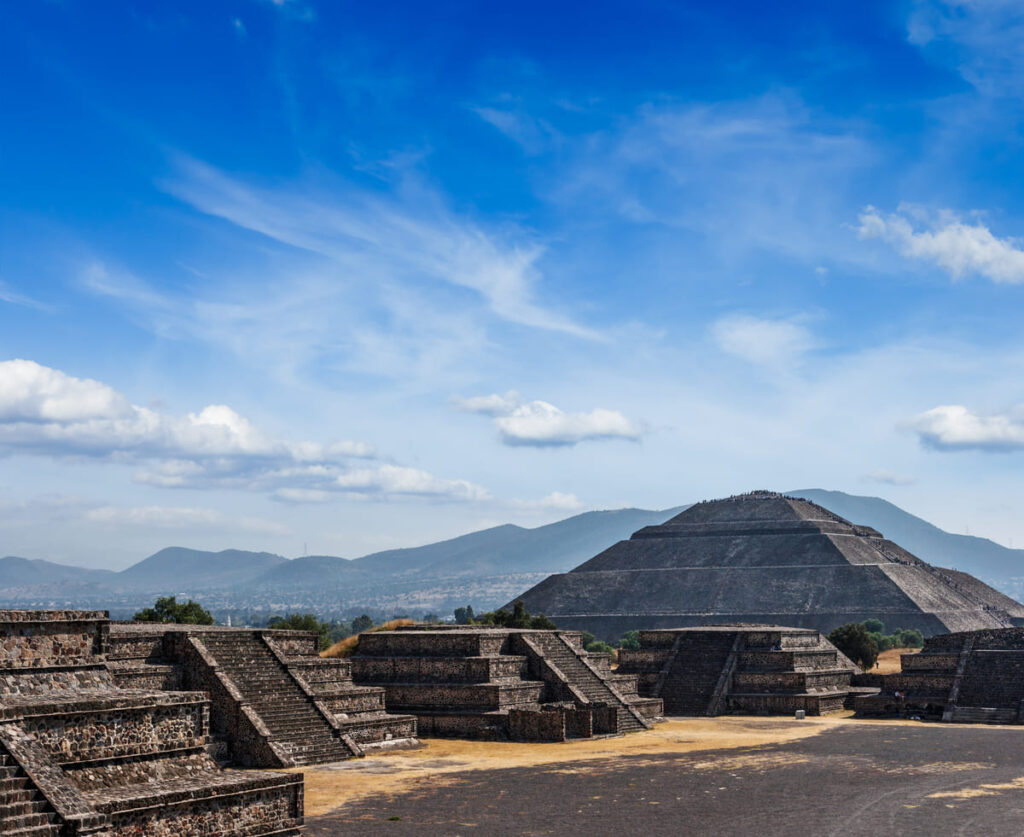Teotihuacan, often referred to as the “City of the Gods” stands as one of the most awe-inspiring archaeological sites in Mexico. Nestled within the Valley of Mexico, this ancient city boasts monumental pyramids, meticulously planned streets, and a rich history that continues to captivate the imagination of historians, archaeologists, and curious minds worldwide. The question that has lingered for centuries is: Who built Teotihuacan?
The Birth of Teotihuacan
Teotihuacan’s history can be traced back to the Preclassic period of Mesoamerican civilization, around 200 BCE to 250 CE. While it was initially inhabited by smaller groups of people, it wasn’t until the Teotihuacan culture emerged that the city truly began to flourish. The Teotihuacan culture brought with it innovative urban planning, advanced agricultural techniques, and remarkable architectural achievements.
The Teotihuacan Culture
The Teotihuacan culture is believed to have been a multi-ethnic society that thrived in the Valley of Mexico. Their advanced knowledge of architecture is evident in the construction of iconic structures such as the Pyramid of the Sun, Pyramid of the Moon, and the Temple of the Feathered Serpent (Quetzalcoatl). The Teotihuacanos were also known for their intricate mural paintings, which provide valuable insights into their beliefs and daily life.
The Mystery of the Builders
Despite the city’s prominence, the identity of the individuals or groups responsible for building Teotihuacan remains shrouded in mystery. Unlike other Mesoamerican civilizations such as the Maya or the Aztecs, the Teotihuacanos did not leave behind written records detailing their history or the construction of their city.
One prevailing theory suggests that Teotihuacan was a cosmopolitan society, attracting people from various regions of Mesoamerica. This theory is supported by the presence of distinct architectural styles and cultural elements from different regions within Teotihuacan, indicating a diverse population.

The Role of Human Sacrifice
One of the intriguing aspects of Teotihuacan is the evidence of human sacrifice. Archaeological excavations have unearthed numerous sacrificial offerings, including burials of individuals who may have been sacrificed to appease the gods. The role of human sacrifice in Teotihuacan’s religious practices remains a topic of debate among scholars.
Decline and Abandonment
Teotihuacan’s decline is another enigma. Around 650 CE, the city began to show signs of decline, including the destruction of some of its temples and the abandonment of certain areas. The reasons for this decline are still unclear, with theories ranging from environmental factors, such as drought, to internal social unrest.
Explore Teotihuacan with Turicard
The question of who built Teotihuacan remains a captivating mystery that continues to intrigue archaeologists and historians. While the identity of the city’s builders may never be definitively known, the legacy of this ancient metropolis endures through its remarkable architecture, art, and the enduring questions it poses about the civilizations of Mesoamerica.
Get your Turicard to experience the amazing Teotihuacán and more.

